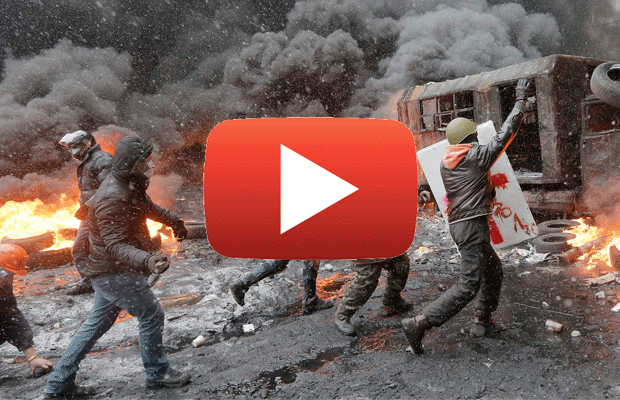
It’s hard to remember the first time I saw a dead body, but it’s certain to have been in film. It might have been a glimpse of a news report from the Iran-Iraq war while waiting for my parents to relinquish control of the television after dinner, or a black and white documentary showing mountains of corpses discovered in concentration camps during World War II. I knew there were some distant but real processes that created dead bodies as a child, but the indifferent framing of those processes as news instead of cartoon hyperbole and crime serials suggested a new and still unseen layer of reality I was not yet familiar with.
The Internet live stream has broken up this mutually dependent dichotomy between artifice and joyless objectivity. With the false dramas of television news made more apparent, live streams from revolts have taken cinema to its least artificial extreme, showing long, unedited footage of events that cannot be understood through any one hero or character.
In the last week, Espreso TV has streamed the protests and occupation in Kiev, a months-long process that has resulted in the release from prison of the former prime minister, the disappearance of the current president, the storming of the presidential residence, the repeal of a militaristic anti-protest law, and new negotiations over constitutional reform. Estimates of people killed in the process are between 70 and 100, according to one New York Times report.
This record of events is transmitted in a compulsive puzzle pieces, with new ones released daily and flung across the Internet, from editorial reprobation to photo galleriesthat add moral tension to the fact-gathering. It’s important to follow these events, to educate one’s self on the social uprisings and violent conflicts of the day as a kind of alms giving for remaining distant and inactive, as if one can take part in history through learning and observation.
One learns as much about revolution from watching live streams as one does from watching sex videos There is great deal of information in both, but if you’ve never taken part in either, both will evaporate in a haze of troublingly alien phenomenon.
“The whole world is watching,” became a slogan in the violent protests at the 1968 Democratic National Convention in Chicago, aware of the cameras filming them as they were beaten and arrested for protesting the Vietnam War. It suggested that creating a media spectacle would have more force than directly assaulting the people, buildings, and resources supporting the war. It was a way of accepting that the only meaningful role left to those protesting was to incite consternation from other powerful people, who would be more effective in petitioning for change, an implicit appeal for authority to correct another authority.
With the exhausting rush of content transmitted through the Internet, this mentality has become both a political strategy and a personal coping method for navigating the otherwise unintelligible flood of information. A few despairing moments catching up on the Ukraine, Venezuela, Egypt, Iraq, Qatar, Sri Lanka, Myanmar, Pakistan, Mexico, or Spain can quiet the unease about our own fragile present, in which the solution to all problems is consuming something you’ve had no hand in making. The revolution is elsewhere, but it will be consumable from the outside.
One learns as much about revolution from watching live streams as one does from watching sex videos There is great deal of information in both, but if you’ve never taken part in either, both will evaporate in a haze of troublingly alien phenomenon. There is a difference between knowing something and having viewed a fact in a form that separates its viewer from having to participate in the process that brings historic facts to life in order to see them. There is a way in which education makes us thieves of other people’s histories and lives, always used to make sense of our own present, growing increasingly dependent on machines that keep us connected to the hallucinatory lifeblood of data drawn from places we will never go, and from people with whom we will never fight, break bed, or make love.
This week, The New Yorker posted its own slideshow of intimate portraits of individual protesters taken by photographer Davide Monteleone. There is something haunting in the faces, which are a mix of old and young, scarred and beautiful, scowling and joyful. The faces are not news, they are ghost presences that emerge from the unarchived and unhistoricized world, an echo of the old black and white photos of civil war soldiers, which we allow ourselves to be moved by because of the impossible distance between subject and viewer. All bodies become corpses when photographed in this way, which is central to their beauty, both a romantic fantasy and a serious historic documentation. Which is maybe why it is so difficult to remember the first time I saw a dead body.
To be surrounded with media is to never stop seeing the dead, though it’s unclear which is which, those foreign bodies violently struggling with history or our own ones, entombed in a present that may have already killed us in our sleep.
Michael Thomsen is Complex's tech columnist. He has written for Slate, The Atlantic, The New Inquiry, NewYorker.com, Billboard, and is author of Levitate the Primate: Handjobs, Internet Dating, and Other Issues for Men. He tweets often at @mike_thomsen.
